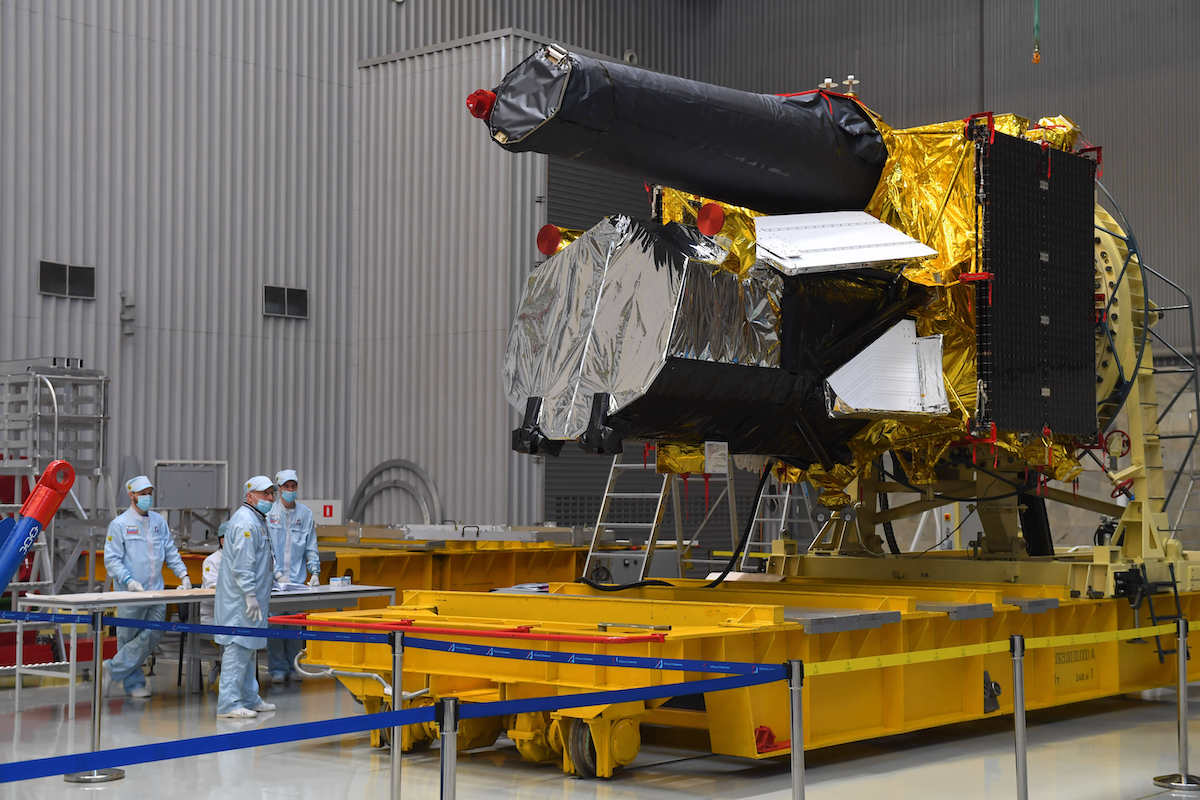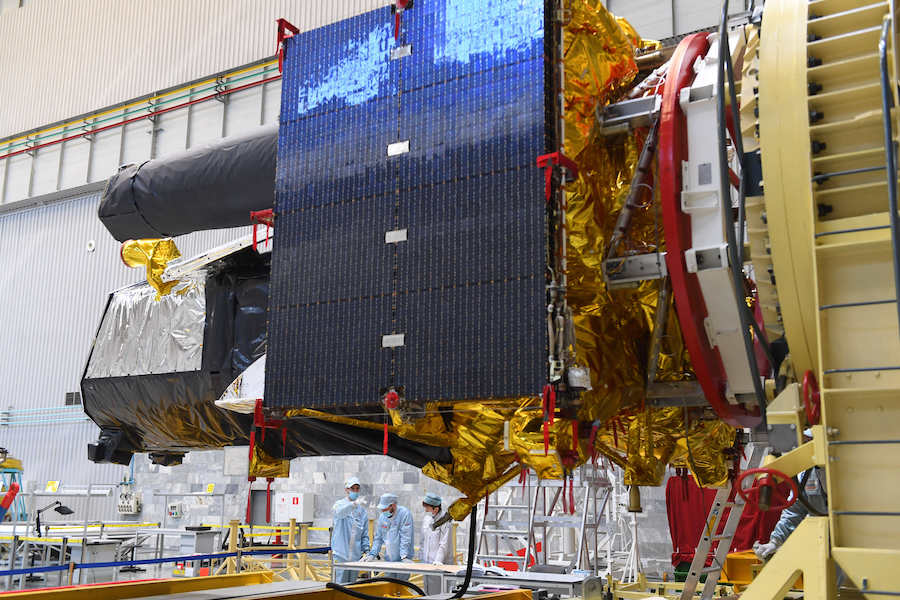
A Russian X-ray astronomy satellite with major contributions from German and U.S. scientists and instrument developers arrived Thursday at the Baikonur Cosmodrome in Kazakhstan for a launch in June aboard a Proton rocket.
The Spektr-RG observatory, fitted with two X-ray telescopes, rode from Moscow to Baikonur inside a climate-controlled shipping container aboard an Antonov An-124 cargo plane. Crews offloaded the spacecraft from the transport plane and transferred Spektr-RG to a clean room facility to begin its launch campaign, including final testing, fueling, and mating with a Block-DM upper stage.
Spektr-RG will be the most ambitious Russian-led astronomy mission to launch since 2011, when Russia sent a radio astronomy observatory into orbit. Liftoff of Spektr-RG on top of a Proton rocket is scheduled for June 21 at 1344 GMT (9:44 a.m. EDT; 6:44 p.m. Baikonur time).
The Proton rocket and its Block-DM upper stage will send the Spektr-RG spacecraft on a three-month journey toward an orbit around the L2 Lagrange point, a gravitationally neutral point about a million miles (1.5 million kilometers) from the night side of Earth. Spektr-RG will begin a six-and-a-half-year mission surveying the sky with its twin X-ray telescopes.

Spektr-RG is a joint project between Roscosmos and DLR, the Russian and German space agencies. The mission will conduct an all-sky X-ray survey, observing galaxies and large-scale galactic clusters to help astronomers examine the role of dark energy and dark matter in the evolution of the universe.
The primary instrument on Spektr-RG is the German-built wide-field eROSITA X-ray telescope, which scientists say will observe more than 3 million active black holes at the centers of galaxies, and approximately 100,000 clusters of galaxies in the distant universe.
Astronomers at the Max Planck Institute for Extraterrestrial Physics in Germany head up the eROSITA project. Scientists designed eROSITA — the extended ROentgen Survey with an Imaging Telescope Array — to study large-scale cosmic structures and reveal new insights into the rate of expansion of the universe, which is driven by a mysterious invisible force known as dark energy.
The eROSITA telescope will be 25 times more sensitive than Germany’s ROSAT satellite, which completed the first X-ray imaging survey of the entire sky in the 1990s.
Astronomers say eROSITA is complementary to other X-ray telescopes, such as NASA’s Chandra observatory, which are designed for pointed imaging of individual X-ray sources. Data from eROSITA could act as a roadmap for Chandra and future X-ray missions to pursue follow-up observations.
A second X-ray telescope on Spektr-RG, developed by a Russian science team, will be sensitive to higher-energy X-rays than eROSITA. The Russian telescope, named ART-XC, will fly with X-ray mirror modules fabricated at NASA’s Marshall Space Flight Center in Alabama.

Russian plans for a large X-ray astronomical observatory have been in development for more than three decades, but the mission was delayed years by Russian economic woes in the 1990s. The Russian and German space agencies signed an agreement in 2009 to jointly develop the Spektr-RG mission, but the project faced additional schedule slips due to technical problems and a decision to switch the observatory from a Zenit launcher to a Proton rocket.
The Proton launcher assigned to the Spektr-RG mission was shipped to Baikonur by train from its manufacturer Khrunichev earlier this year.
Spektr-RG is the largest Russian astronomy satellite to launch since the Spektr-R radio observatory in 2011. Spektr-R stopped responding to commands from the ground in January after exceeding its planned five-year mission lifetime, and Russian officials declared the mission over earlier this month, according to the Russian RIA Novosti news agency.
Email the author.
Follow Stephen Clark on Twitter: @StephenClark1.



